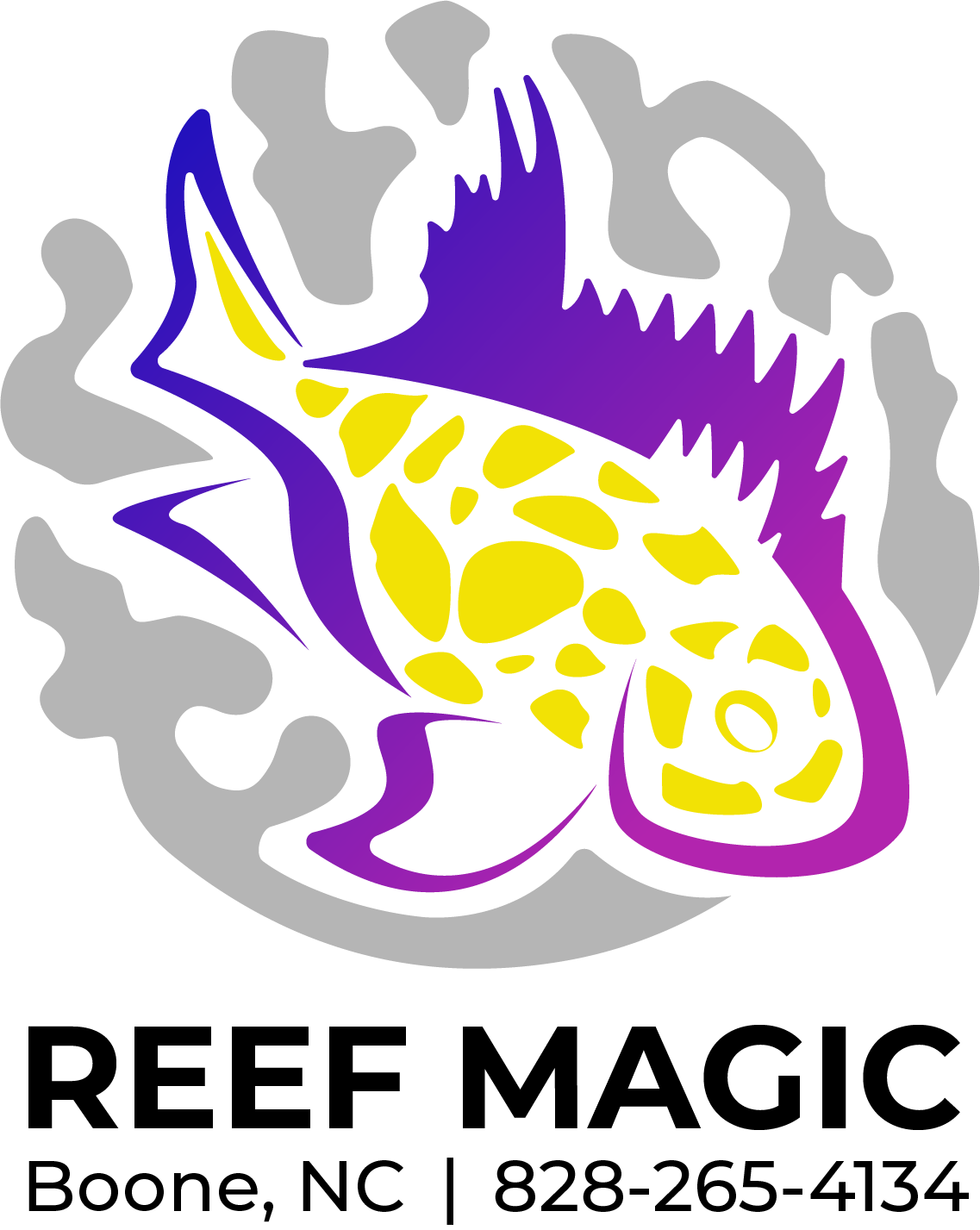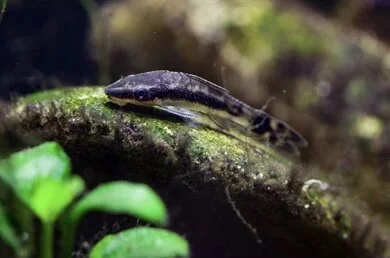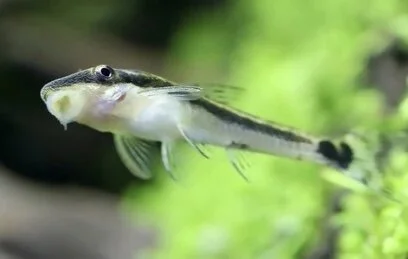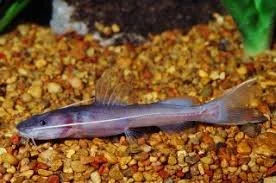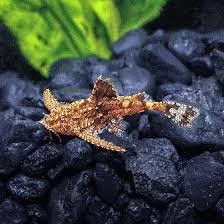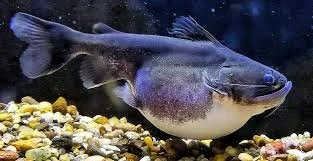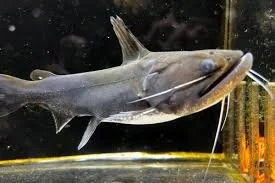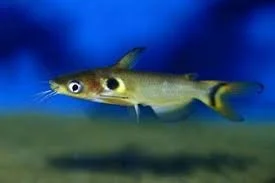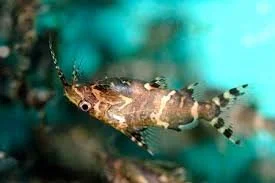 Image 1 of 1
Image 1 of 1


Catfish- Zebra Upside Down
The Zebra Catfish is a hybrid that is known for swimming upside down, a behavior that helps it forage for food. It is a peaceful and social species from African rivers that can be kept in community aquariums with larger, non-aggressive fish. The name "zebra" comes from its dark brown, tan, and cream striping and spotting pattern.
Physical characteristics
Appearance: Has attractive dark brown, tan, and cream striping and spotting.
Size: A small catfish that typically grows to about 3 inches long.
Body: Can be sensitive to poor water quality and produces a fair amount of waste.
Gender: Females are generally larger and plumper than males.
Behavior and habits
Upside-down swimming: This is its most unique characteristic, which it uses to eat from the surface of the water and search for food under rocks and leaves.
Nocturnal: It is primarily nocturnal but will become active during the day once it is established in an aquarium.
Social: It is a social and peaceful fish that can be kept in groups and is compatible with other non-aggressive species.
Sounds: It can make squeaking or croaking sounds when removed from the water.
Habitat and care
Origin: Native to the Congo Basin of Africa.
Diet: An omnivore that will eat invertebrates, algae, and prepared foods like sinking pellets, bloodworms, and flake food.
Aquarium: Needs a well-maintained aquarium with plenty of driftwood, caves, and plants for hiding.
Water quality: Sensitive to poor water quality, so regular water changes are necessary.
Tank mates: Avoid keeping with small fish or ornamental invertebrates that could be eaten. Good tank mates include larger Cichlids or Barbs.
Breeding: Breeding is difficult in captivity but has been accomplished in large tanks in some instances.
The Zebra Catfish is a hybrid that is known for swimming upside down, a behavior that helps it forage for food. It is a peaceful and social species from African rivers that can be kept in community aquariums with larger, non-aggressive fish. The name "zebra" comes from its dark brown, tan, and cream striping and spotting pattern.
Physical characteristics
Appearance: Has attractive dark brown, tan, and cream striping and spotting.
Size: A small catfish that typically grows to about 3 inches long.
Body: Can be sensitive to poor water quality and produces a fair amount of waste.
Gender: Females are generally larger and plumper than males.
Behavior and habits
Upside-down swimming: This is its most unique characteristic, which it uses to eat from the surface of the water and search for food under rocks and leaves.
Nocturnal: It is primarily nocturnal but will become active during the day once it is established in an aquarium.
Social: It is a social and peaceful fish that can be kept in groups and is compatible with other non-aggressive species.
Sounds: It can make squeaking or croaking sounds when removed from the water.
Habitat and care
Origin: Native to the Congo Basin of Africa.
Diet: An omnivore that will eat invertebrates, algae, and prepared foods like sinking pellets, bloodworms, and flake food.
Aquarium: Needs a well-maintained aquarium with plenty of driftwood, caves, and plants for hiding.
Water quality: Sensitive to poor water quality, so regular water changes are necessary.
Tank mates: Avoid keeping with small fish or ornamental invertebrates that could be eaten. Good tank mates include larger Cichlids or Barbs.
Breeding: Breeding is difficult in captivity but has been accomplished in large tanks in some instances.

